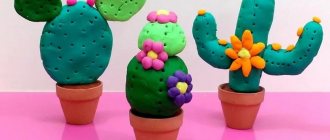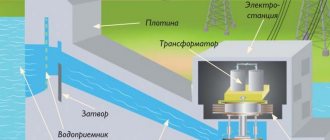Research work for older preschoolers “Water and its properties”
Marina Derevnina
Research work for older preschoolers “Water and its properties”
the work was performed by Ospanova L, 6 years old.
We often hear that without water life on our beautiful planet Earth is impossible. Many smart books have been read about its wonderful properties And if you believe television stories, water is one of the most powerful elements in nature.
And yet, as a student of the preparatory group, I was overcome by doubts as to whether water has such wonderful properties . I decided to check this through observations and experiments.
The purpose of my work : to prove that water has properties that are important for all life on Earth.
The tasks that I solved in my work are the following:
1. Study the literature about water and its properties .
2. Conduct experiments demonstrating various properties of water .
3. Draw conclusions.
Object of study : properties of water , as well as its importance for all life on Earth.
Subject of research : water .
Hypothesis: Water and its properties affect all living things .
Research methods : literature study, experiments, observation, generalization.
Chapter 1. General information about water
Water is the most important, necessary and used substance on the planet. Life on Earth is impossible without water. For many plants and animals, water is their place of life . But even those who live on land cannot live without water. There is no substitute for water!
It occupies most of the surface of our planet. The human body consists of more than half water.
Water can be fresh , that which is found in rivers, lakes, streams, and salty - this is the water of the seas and oceans . There is much more salt water than fresh water. water is suitable for human life, plants and animals . There is less and less such water on the planet due to wastewater from factories and factories that pollutes the water. Plants and animals suffer from this. Contaminated water is also dangerous to human health. Therefore, we, people, need to conserve water and guard against unreasonable waste.
Chapter 2. Conducting experiments
Experience No. 1. To prove that plants need water , I took an onion and lowered it, roots down, into the water. After 7 days, long roots and green feathers appeared. And without water, our bulbs have been lying around since the fall and do not germinate. I also conducted an experiment with shoots of a geranium flower: in water the shoot took root, but without water it dried up.
I concluded that plants need water .
From life experience we know that when we drink pure water, we do not feel taste or smell.
I decided to conduct some experiments and find out what other properties water has .
Experience No. 2. To test this, I needed two different glasses, one with water and the other empty. When I began to pour water from one glass to another, I saw that the water took the form of an empty vessel.
Conclusion: Water does not have its own shape, but takes the shape of the vessel into which it is poured.
Experience No. 3. For the next experiment, I took two glasses of drinking water. I poured sugar into one glass and sand into the other. Mixed well. The sugar has dissolved and the sand is clearly visible.
Conclusion: Water has the property of dissolving some substances, which means water is a solvent .
Experience No. 4. To make sure that the water is clear , I prepared two glasses: one with water, the second with milk. She placed a button in each glass. It turned out that it is not visible in milk, but in water it is visible.
Conclusion: The water is clear .
Experience No. 5. While watching a program on TV, I heard the expression “ water has the property of fluidity”
, I became curious and decided to check it out. I took a CD, dropped water on it, tilted it, and the drop flowed.
Conclusion: Water is fluid .
Experience No. 6.
I have always wondered how much water a person drinks. And one weekend, in our family we decided to conduct another study and find out how much water a person drinks per day. We noted each glass of water, tea, or juice we drank in the table.
Conclusion: Our family drank 40 glasses of liquid during the day.
Conclusion
Through experiments, I was convinced that water is a unique substance on Earth that can have various properties . It is difficult to imagine what would happen to our planet if water . Without water, crop production, livestock farming and much more are impossible. Without water, life on Earth is impossible. Knowledge about the properties of water allows us to use them more skillfully in everyday life.
Thus, the goal of my work has been achieved . The hypothesis was confirmed.
Research work "Water is the most amazing substance on Earth."
Municipal government educational institution secondary school No. 2 village.
Barabash , Khasansky municipal district, Primorsky Krai.
Research
“Water is the most amazing substance on Earth”
Completed by: Katyuk Egor, 1st grade student
Head: Zvereva Irina Valentinovna, primary school teacher
To understand water is to understand the universe, all the wonders of nature and life itself.
Masaru Emoto
Relevance of the topic
Water is the cradle of life. Without water, life on planet Earth could not even appear. Without it, there would be no plants or animals. We wouldn't exist either. Water is used everywhere - in agriculture, industry, and everyday life. The earth would have cooled long ago and turned into a lifeless piece of stone, if not for the water.
Water is the most amazing substance on Earth. Without it, no living organism can exist. No biological, chemical reactions or technological processes can occur without water. I wanted to understand why water is the most amazing substance, what makes it unique, so I decided to explore it.
Purpose and objectives of the work
Goal:
Explore water and study its unique properties.
Tasks:
1. Collect information about water.
2. Conduct experiments with water.
3. Summarize the information received.
4. Draw conclusions about the work done
.
Hypothesis
Water is the most amazing substance with unique properties.
The word “water” dates back to time immemorial and since that time water has been called any “living” moisture that is so necessary for the life of people, animals and the nature that surrounds us. There is no exact answer why water was called water. Each nation has its own name for water, which determines its meaning for others.
Water is the simplest and most common substance on the planet. But at the same time, it is fraught with many mysteries.
Scientists still continue to explore it, finding more and more interesting data about it.
Water is one of the most important substances for humans. It exists everywhere: in the oceans and seas, rivers and lakes, underground and above the earth, in the soil. There is a lot of water in the atmosphere - clouds, fog, steam, rain, snow.
Water occupies three quarters of the surface of our planet.
And we ourselves are aquatic creatures, because we are approximately 70% water.
Water plays a huge role in our lives; it is our constant companion. The importance of water is very difficult to overestimate.
Water is life itself.
Water is the only substance found in large quantities naturally in all three states of aggregation: solid, liquid and gaseous (water, ice and water vapor).
There is nothing like water on Earth.
It seems that water is a unique essence created by the Creator specifically for the physical world.
Water is amazing for its most ordinary properties. And we will now consider these properties and demonstrate some of the most interesting experiments.
Study No. 1 - Observation
For this study we will need: cups of water; spoons; napkins ; glass ball. Progress of the study: 1. Determine the color of the water. 2. Determine the smell of water. 3. Determine the taste of water. 4. Drop onto a napkin. 5. Pour the water into another glass. 6. Draw a conclusion. Conclusion: Water is colorless and transparent. Without smell. No taste. The water is flowing. Water can be in a liquid state.
Study No. 2 – Experiment
For the experiment we will need: a plastic plate; pieces of ice; napkins. Procedure of the experiment: 1. Determine what ice feels like. 2. Hold a piece of ice in your palm. 3. Observe. 4. Draw a conclusion. Conclusion: When water freezes, it turns into ice and is in a solid state. The ice is hard and transparent. Ice melts when heated.
Study No. 3 – Experiment
For the experiment we will need: a school board; wet rag. Procedure of the experiment: 1. Wash the board with a wet cloth. 2. Observe what happens to the board after some time. 3. Draw a conclusion. Conclusion: Water can evaporate.
Study No. 4 – Experiment
For the experiment we will need: a mirror with a handle; Electric kettle. Procedure of the experiment: 1. Boil water in a kettle. 2. Hold a mirror with a handle over the spout of the teapot. 3. Watch what happens. 4. Draw a conclusion. Conclusion: Water, when heated strongly, turns into steam and can be in a gaseous state.
Study #5 – Experiment
Study No. 6 – Experiment
For the experiment we will need: a syringe without a needle; glasses of water. Procedure of the experiment: 1. Place the syringe without a needle in a glass of water. 2. Pull the plunger out to the 5 ml mark. 3. Plug the syringe hole with your finger. 4. Try to push the piston back. 5. Watch what happens. 6. Draw a conclusion. Conclusion: Water retains its volume and is difficult to compress mechanically.
Having familiarized myself with very interesting information about water, I became convinced that it was not yet fully studied, interesting, unique, mysterious substance. I was especially struck by the ability of water to retain information—memory. Water absorbs information from its environment. It can be anything, thoughts, light, music, prayers, images or just words.
Study No. 7 – Experiment
For the experiment we will need: 4 water containers;
music No.
1 rock - music;
No.
2 children's song “Song of the Baby Mammoth”;
No.
3 chanson “Butyrka”;
No.
4 instrumental (organ) I.S. Bach Procedure of the experiment: 1. Pour water into containers. 2. Near container No. 1 there is rock music,
No.
2 children's song, No. 3, chanson No. 4 organ music. 3. Place the containers in the freezer. 4. Observe what happens. 5. Draw a conclusion. Conclusion: Water changes its structure under the influence of music.
№
1 rock - music
№
2 “Song of the Baby Mammoth”
№
3 "Butyrka"
№
4 I.S. Bach
conclusions
During the course of my research, I expanded my knowledge about water.
Conducted his own observations and experiments. It has been experimentally proven that: 1. Water is a liquid that has properties. 2. Water exists in three states: solid, liquid, gaseous. 3. Water changes from solid to liquid, from liquid to gas. 4. The properties of water change its structure under the influence of various influences (thoughts, words, music, etc.) The hypothesis was confirmed. Water has its own unique and subtle features. It is colorless, tasteless, odorless, transparent, shapeless, fluid, has heat capacity and is a good solvent. Fog, clouds, dew, rain, hail, frost, snow, ice, frost - all this is water in different states. No corner of our planet can live without it. Her influence is truly enormous. People must maintain the presence of water in our lives. This brings us to the understanding that water is a unique substance that carries information about Life.
INTERESTING FACTS ABOUT WATER
The cleanest water in Finland.
According to UNESCO, the cleanest water is in Finland. A total of 122 countries took part in the study of fresh natural water. At the same time, 1 billion people around the world do not have access to safe water at all.
You can get ice faster from hot water
. Which water will turn into ice faster: hot or cold? If we think logically, then, of course, it’s cold. After all, a hot one must first cool down and then freeze, but a cold one does not need to cool down. However, experiments show that it is hot water that turns into ice faster. There is still no exact answer to the question why hot water freezes faster than cold water. Perhaps the reason is the difference in supercooling, evaporation, ice formation, convection, or the reason is the effect of liquefied gases on hot and cold water.
Water is a carrier of diseases.
Water not only gives life, but can also take it away. 85% of all diseases in the world are transmitted by water. Every year, 25 million people die from these diseases.
Most fresh water
is in glaciers. Where is the most water? The answer seems obvious: in the World Ocean. However, in fact, the Earth's mantle contains 10-12 times more water than the World Ocean. At the same time, almost all the water available on the planet is not suitable for drinking. We can only drink 3% of the water - that’s how much fresh water we have. But even most of this 3% is inaccessible, as it is contained in glaciers.
35 tons of water in a lifetime
- Without water, a person cannot live very long. The need for water comes second after oxygen. A person can live about six weeks without food, and five to seven days without water. Over the course of his entire life, a person drinks approximately 35 tons of water.
There is water that burns.
There is also dangerous water. For example, in Azerbaijan there is water that contains a lot of methane, so it can catch fire if you bring a match to it. And in Sicily, in one of the lakes there are underwater sources of acid that poison all the water in this reservoir.
Thank you for your attention.
Literature and sources: https://infourok.ru/ https://fishki.net/1256802-15-interesnyh-faktov-o-vode.html https://fb.ru/article/128548/interesnyie-faktyi-o -vode-dlya-vzroslyih-i-detey https://priroda.inc.ru/pitanie/pitanie9.html


